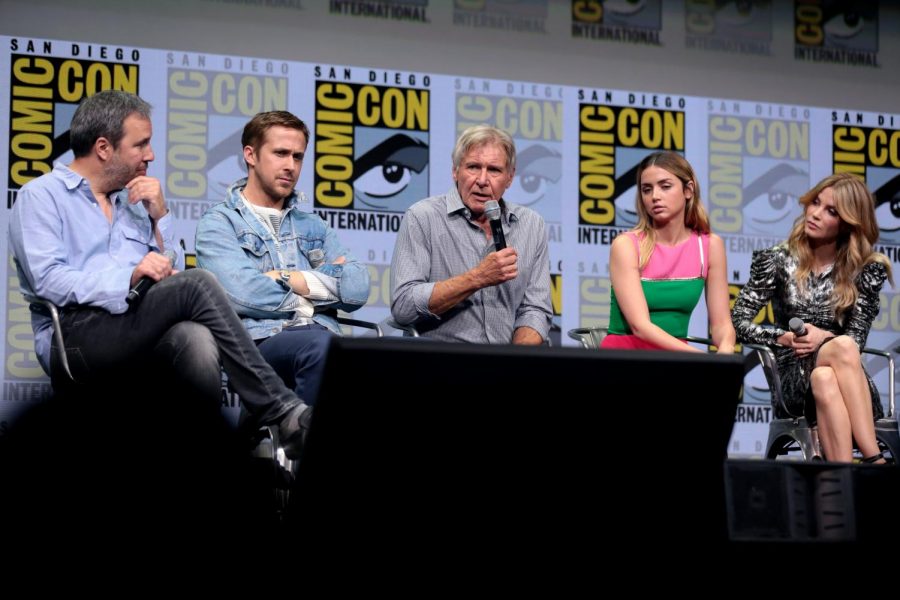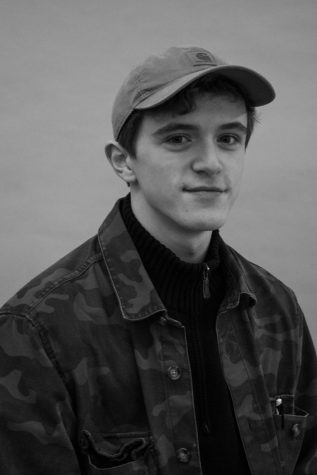Blade Runner 2049: A Sequel That Really Measures Up
Pictured: The cast of Blade Runner 2049 at Comic Con
October 30, 2017
It’s not often that a great movie has an even better sequel. Lord of the Rings did, as did The Dark Knight, and The Godfather.
These sequels all had great starting points and they all built off of them with spectacular success. This kind of usurpation is rare, only happening maybe once in a decade. Blade Runner 2049 is one of those movies.
In 1982, Ridley Scott directed one of the most influential science fiction films of the late 20th century: Blade Runner, based off the novel Do Androids Dream of Electric Sheep? by Philip K. Dick. In the world of Blade Runner, there exist Replicants—synthetic humans designed for slave labor. The job of the film’s main character Deckard, is to hunt down rogue Replicants for the LAPD. Deckard is assigned to find a crew of Replicants, and along the way, the film explores what it means to be human when a robot may seem identical to a real person.
When it came out, Blade Runner was an instant sci-fi staple. The set designs were some of the most creative to come out of the genre—a 2019 Los Angeles filled with giant fire-spewing oil pipelines and markets of people speaking a hash of Japanese, Russian, and English (which gives insight into the events that preceded the events of the film).
Among all this rich world-building, there are a lot of faults, small errors in what could be called “film syntax”: establishing shots that go for a second too long, lengthy scenes, and even a complete lack of color. All of them hold back what could’ve been such a phenomenal story.
I rewatched Blade Runner recently and couldn’t help but find myself slumped in my seat at times, wanting to skip whole chunks of the movie. Blade Runner 2049’s director, Denis Villeneuve, has essentially improved upon every aspect of the original film.
Blade Runner 2049 is a continuation of the original, carrying the same themes and questions as its predecessor and retaining all the cinematic wonder and magic. The meticulously cluttered sets of the original have been one-upped. The crowded, claustrophobic city has been traded for one just as, if not more, packed than in the original. Though there is more in the world of Blade Runner 2049, everything has its own cinematic space.
The problematic slow pace is given the boot, as you can tell from the very first set of establishing shots. Gone are the long, motionless shots inside LA; that kind of error has been replaced with dynamic, colorful views of the city. These small tweaks throughout the movie fix so many of the previous wrongs, causing the 163-minute Blade Runner 2049 to feel more concise than the 117-minute original.
Blade Runner 2049 tells a story with the same major themes as the original, but in a much more interesting way. The story is impossible to explain without ruining the viewing experience, so I’ll try to avoid anything vital.
Agent K (Ryan Gosling), is part of a new generation of Blade Runners. In the first scene, K attempts to take in a rogue Replicant (Dave Bautista) when he stumbles upon a case leading to, as the rogue Replicant puts it, “a miracle.” On the hunt for this miracle, K uncovers a lot about himself and the world he lives in as a whole. The mystery that unravels in this movie is one worth seeing for yourself. I urge you to go see this film while it’s still in cinemas.
Blade Runner 2049 has been the best movie I’ve seen this year, and I’m sure it will do the same for this generation as the original did in 1982.
This piece also appears in our October print edition.










